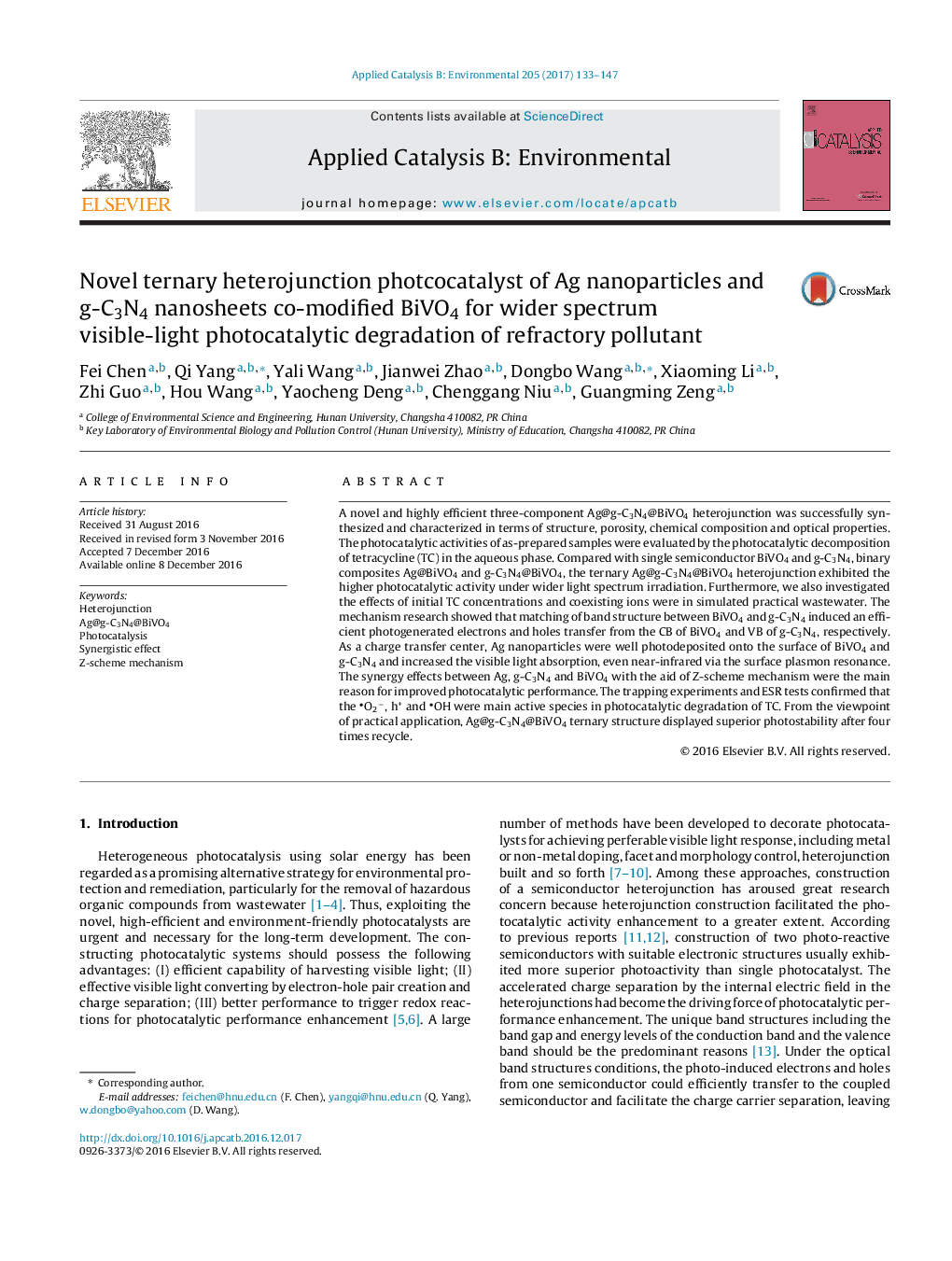| کد مقاله | کد نشریه | سال انتشار | مقاله انگلیسی | نسخه تمام متن |
|---|---|---|---|---|
| 6454293 | 1418815 | 2017 | 15 صفحه PDF | دانلود رایگان |

- Ternary Ag@g-C3N4@BiVO4 heterojunction was prepared via wet-impregnation and photo-deposition method.
- The sample exhibited superior photocatalytic performance towards TC degradation under wider spectrum.
- The coexisting ions in practical wastewater were discussed.
- O2â, h+ and OH are the main active species.
- The Z-scheme mechanism was systematically investigated.
A novel and highly efficient three-component Ag@g-C3N4@BiVO4 heterojunction was successfully synthesized and characterized in terms of structure, porosity, chemical composition and optical properties. The photocatalytic activities of as-prepared samples were evaluated by the photocatalytic decomposition of tetracycline (TC) in the aqueous phase. Compared with single semiconductor BiVO4 and g-C3N4, binary composites Ag@BiVO4 and g-C3N4@BiVO4, the ternary Ag@g-C3N4@BiVO4 heterojunction exhibited the higher photocatalytic activity under wider light spectrum irradiation. Furthermore, we also investigated the effects of initial TC concentrations and coexisting ions were in simulated practical wastewater. The mechanism research showed that matching of band structure between BiVO4 and g-C3N4 induced an efficient photogenerated electrons and holes transfer from the CB of BiVO4 and VB of g-C3N4, respectively. As a charge transfer center, Ag nanoparticles were well photodeposited onto the surface of BiVO4 and g-C3N4 and increased the visible light absorption, even near-infrared via the surface plasmon resonance. The synergy effects between Ag, g-C3N4 and BiVO4 with the aid of Z-scheme mechanism were the main reason for improved photocatalytic performance. The trapping experiments and ESR tests confirmed that the O2â, h+ and OH were main active species in photocatalytic degradation of TC. From the viewpoint of practical application, Ag@g-C3N4@BiVO4 ternary structure displayed superior photostability after four times recycle.
105
Journal: Applied Catalysis B: Environmental - Volume 205, 15 May 2017, Pages 133-147